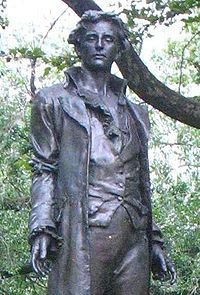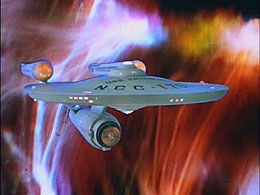This is your morning Open Thread. Pour your favorite beverage and review the past and comment on the future.
Find the past “On This Day in History” here.
September 11 is the 254th day of the year (255th in leap years) in the Gregorian calendar. There are 111 days remaining until the end of the year. It is usually the first day of the Coptic calendar and Ethiopian calendar (in the period AD 1900 to AD 2099).
On this day in 1941, ground is broken for the construction of The Pentagon.
The Pentagon is the headquarters of the United States Department of Defense, located in Arlington County, Virginia. As a symbol of the U.S. military, “the Pentagon” is often used metonymically to refer to the Department of Defense rather than the building itself.
Designed by the American architect George Bergstrom (1876-1955), and built by Philadelphia, Pennsylvania, general contractor John McShain, the building was dedicated on January 15, 1943, after ground was broken for construction on September 11, 1941. General Brehon Somervell provided the major motive power behind the project; Colonel Leslie Groves was responsible for overseeing the project for the Army.
The Pentagon is the world’s largest office building by floor area, with about 6,500,000 sq ft (604,000 m2), of which 3,700,000 sq ft (344,000 m2) are used as offices. Approximately 23,000 military and civilian employees and about 3,000 non-defense support personnel work in the Pentagon. It has five sides, five floors above ground, two basement levels, and five ring corridors per floor with a total of 17.5 mi (28.2 km) of corridors. The Pentagon includes a five-acre (20,000 m2) central plaza, which is shaped like a pentagon and informally known as “ground zero”, a nickname originating during the Cold War and based on the presumption that the Soviet Union would target one or more nuclear missiles at this central location in the outbreak of a nuclear war.
On September 11, 2001, exactly 60 years after the building’s groundbreaking, hijacked American Airlines Flight 77 was crashed into the western side of the Pentagon, killing 189 people, including five hijackers, 59 others aboard the plane, and 125 working in the building.

 On this day in 1776, General George Washington asks for a volunteer for an extremely dangerous mission: to gather intelligence behind enemy lines before the coming Battle of Harlem Heights. Captain Nathan Hale of the 19th Regiment of the Continental Army stepped forward and subsequently become one of the first known American spies of the Revolutionary War.
On this day in 1776, General George Washington asks for a volunteer for an extremely dangerous mission: to gather intelligence behind enemy lines before the coming Battle of Harlem Heights. Captain Nathan Hale of the 19th Regiment of the Continental Army stepped forward and subsequently become one of the first known American spies of the Revolutionary War. On this day in 1776, the Continental Congress formally declares the name of the new nation to be the “United States” of America. This replaced the term “United Colonies,” which had been in general use.
On this day in 1776, the Continental Congress formally declares the name of the new nation to be the “United States” of America. This replaced the term “United Colonies,” which had been in general use.
 The name is linked to Samuel Wilson, a meat packer from Troy, New York, who supplied barrels of beef to the United States Army during the War of 1812. Wilson (1766-1854) stamped the barrels with “U.S.” for United States, but soldiers began referring to the grub as “Uncle Sam’s.” The local newspaper picked up on the story and Uncle Sam eventually gained widespread acceptance as the nickname for the U.S. federal government.
The name is linked to Samuel Wilson, a meat packer from Troy, New York, who supplied barrels of beef to the United States Army during the War of 1812. Wilson (1766-1854) stamped the barrels with “U.S.” for United States, but soldiers began referring to the grub as “Uncle Sam’s.” The local newspaper picked up on the story and Uncle Sam eventually gained widespread acceptance as the nickname for the U.S. federal government.


 The treaty document was signed at the Hotel d’York – which is now 56 Rue Jacob – by John Adams, Benjamin Franklin, and John Jay (representing the United States) and David Hartley (a member of the British Parliament representing the British Monarch, King George III). Hartley was lodging at the hotel, which was therefore chosen in preference to the nearby British Embassy – 44 Rue Jacob – as “neutral” ground for the signing.
The treaty document was signed at the Hotel d’York – which is now 56 Rue Jacob – by John Adams, Benjamin Franklin, and John Jay (representing the United States) and David Hartley (a member of the British Parliament representing the British Monarch, King George III). Hartley was lodging at the hotel, which was therefore chosen in preference to the nearby British Embassy – 44 Rue Jacob – as “neutral” ground for the signing. Several inventors worked on early versions of a cash-dispensing machine, but Don Wetzel, an executive at Docutel, a Dallas company that developed automated baggage-handling equipment, is generally credited as coming up with the idea for the modern ATM. Wetzel reportedly conceived of the concept while waiting on line at a bank. The ATM that debuted in New York in 1969 was only able to give out cash, but in 1971, an ATM that could handle multiple functions, including providing customers’ account balances, was introduced.
Several inventors worked on early versions of a cash-dispensing machine, but Don Wetzel, an executive at Docutel, a Dallas company that developed automated baggage-handling equipment, is generally credited as coming up with the idea for the modern ATM. Wetzel reportedly conceived of the concept while waiting on line at a bank. The ATM that debuted in New York in 1969 was only able to give out cash, but in 1971, an ATM that could handle multiple functions, including providing customers’ account balances, was introduced.